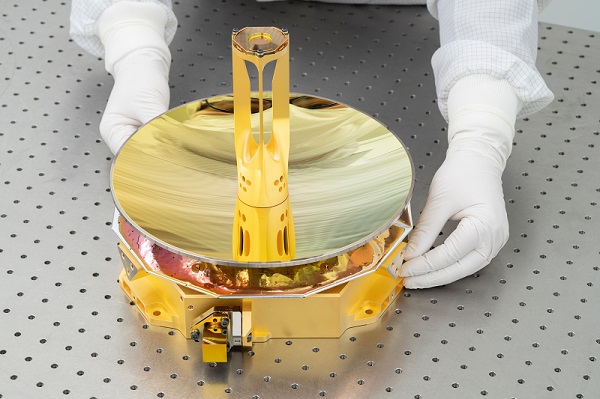The European Space Agency (ESA) is set to launch its Jupiter Icy Moons Explore (JUICE) mission this week, which aims to explore Jupiter and its moons. On board the spacecraft will be the GALA measuring instrument, which will use laser pulses to measure the surface of the Earth-like moon Ganymede.
Including GALA, the JUICE space probe carries 10 distinct scientific instruments. Along with a radar sounder, RIME, GALA will be used to explore the surface and subsurface of the moons at approximately 1 billion km from Earth.

Artist's impression of the JUICE mission to explore Jupiter and its moons. Courtesy of ESA, ATG, NASA, University of Leicester, and University of Arizona.
GALA was developed by researchers at the Fraunhofer Institute for Applied Optics and Precision Engineering IOF (Fraunhofer IOF) along with HENSOLDT Optronics. Stefan Risse, head of the precision optical components and systems department at Fraunhofer IOF, said that as part of the JUICE mission, a laser altimeter is being used for the first time as a high-precision metal optic for exploring Ganymede. The scientists hope to gain insights into the topgraphy of the moon, as well as information on its origin, he said.
GALA will send laser pulses to the moon from an orbit around Ganymede and receive reflected signals. From the transit time of the pulse, the distance to the moon surface can be determined and the topography calculated, which requires a high-precision laser receiving unit. Fraunhofer IOF researchers developed a special reflecting telescope that captures the laser pulses that are reflected back from the lunar surface. In this way, GALA can measure the topography of Ganymede with a resolution of less than 10 cm.
One particularly important question that GALA could answer in the future is whether there are water deposits on Ganymede. “The measurements with GALA take place at different orbital positions of the moon Ganymede in relation to Jupiter,” said Henrik von Lukowicz, head of the precision systems research group at Fraunhofer IOF. “If there were water below the surface, the tidal forces as a result of the moon’s motion would lead to a deformation of the surface. This means GALA could possibly even prove the existence of water.”
The mission will take more than 10 years. The JUICE probe will initially need eight years to arrive in orbit around Jupiter. GALA will explore Jupiter’s moons Europa, Callisto, and Ganymede, as well as Jupiter itself, for three more years.
“On the way to Jupiter, the optical telescope we have developed must cope with extreme environmental conditions in ultrahigh vacuum, characterized by enormous acceleration during rocket launch, high temperature changes, and very strong cosmic radiation,” von Lukowicz said. “The excellent opto-mechanical properties will make it possible to explore Jupiter’s icy moons even under these challenging conditions.”

The mirror telescope for the laser altimeter GALA was developed by Fraunhofer IOF researchers for the JUICE space mission. Courtesy of Fraunhofer IOF.
Complementing JUICE’s geophysical instrument package are a remote sensing package and an in situ instrument. The remote sensing package includes imaging and spectral imaging capabilities from the ultraviolet to submillimeter wavelengths.
The JUICE mission is scheduled to launch from ESA’s Kourou spaceport in French Guiana on April 13 or 15, depending on conditions.